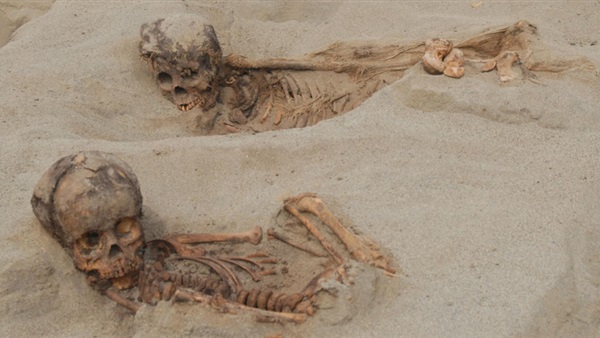100 children found sacrificed at ritual site in Peru

A mass sacrifice site containing the remains of more
than 100 children has been unearthed in Peru.
Dating back to the 15th century, archaeologists have
identified the remains as part of the largest mass sacrifice of its kind ever
seen in the Americas.
The bodies, which belonged to children as young as
five, bore evidence of having their hearts ritualistically removed.
Alongside the bones of 140 children were those
belonging to more than 200 young llamas, all spread across an area spanning
around 700 square metres.
The Huanchaquito-Las Llamas site was part of the
Chimu state, which was the dominant society along the coast of Peru during the
15th century.
These bodies were unearthed over the course of five
years, and scientists have dated them to the height of the Chimu culture in
1450.
A thick layer of mud covering the remains indicated
that the killing came after a large rain storm or flood, which may have been
what inspired these ancient Peruvians to perform such a dramatic act.
Such human sacrifices are known from a variety of
cultures, and are normally performed as part of funeral or otherwise spiritual
rituals, but the Chimu discovery was unprecedented.
“This archaeological discovery was a surprise to all
of us – we had not seen anything like this before,” said Dr John Verano, an
anthropologist at Tulane University and one of the study’s authors.
“There was no suggestion from ethno-historic sources
or historic accounts of child or camelid sacrifices being made on such a scale
in northern coastal Peru."
As the team removed the bones from the sediment,
they realised there were cut marks along the children’s sternums and displaced
ribs, suggesting they had their chests cut open to have organs removed.
The authors of the study, published in the journal
PLOS ONE, noted the sacrifice of so many would have been an enormous investment
of resources for this ancient culture and must therefore have had enormous
significance.
“We were fortunate to be able to completely excavate
the site and to have a multidisciplinary field and laboratory team to do the
excavation and preliminary analysis of the material,” said Dr Verano.
“This site opens a new chapter on the practice of
child sacrifice in the ancient world.”





